As an Amazon Associate I earn from qualifying purchases.
Nixtamal. Such a cool word! It is to Mesoamerica what hominy is to the United States: corn treated with an alkali substance to render it more nutritious, easier to grind, and, to many, tastier and more aromatic — think about the smell of a Mexican corn tortilla and that’s nixtamalization you are smelling. Here’s how to do it at home.

Nixtamal or hominy are featured ingredients in a number of traditional dishes throughout the US and in Mesoamerica, primarily the American South, Mexico and Guatemala. Most of you know about hominy grits, which are regular grits made with nixtamalized corn; I like those made with white corn.
You will also see hominy in many soups and stews, most of which date back 500 years or more. The most famous soup with nixtamalized corn is pozole, which is arguably the national dish of Mexico, and which has a wide variety of styles; here is my recipe for red pozole, pozole rojo, and here is my rendition of white pozole, pozole blanco. Menudo also features nixtamal.
Primarily, however, you use nixtamal to make masa, dough for corn tortillas and tamales, as well as other tasty corn-based treats like tetelas or masa empanadas or Central American arepas. Nixtamalization is what allows corn to become an actual dough that will stick to itself.
What follows is how to make nixtamal, or hominy, at home. Why bother? A variety of reasons, really.
- First, industrially canned hominy is nasty, a far worse product than what canned beans are to dried.
- Second, homemade masa dough is amazing, as much of a revelation as is making pasta from freshly ground flour.
- Third, when you make your own masa dough by nixtamalization, it will stick to itself better than industrial masa harina, which is dehydated masa.
You also can make cool little masa dumplings with fresh dough, like the chochoyotes in my venison mole. This won’t work with masa harina.
Corn for Nixtamal
Making nixtamal is easy, once you are set up for it. First, you need dried corn.
Keep in mind that while any dried corn can be nixtamalized, not any dried corn makes good masa dough. More on that later. But if you just want corn in a stew or soup or whatever that tastes better than regular ole’ corn, any field corn will work. So far as I know, sweet corn is not nixtamalized, and it’s almost never dried anyway.
I get my field corn from a variety of sources. Mexican corn from Masienda, a Los Angeles-based company that imports heirloom corn from Mexico; I’ve bought red bloody butcher corn from Breadtopia.
The best corn for nixtamal is flour corn, usually grown in Mexico. After that, in order of preference, I’d go with dent corn, then flint corn, then popcorn.
I also grow field corn in my garden. My advice for good seed for field corn is to look up Native Seeds Search, the Seed Savers Exchange or Southern Exposure Seed Exchange. Just a note: field corn takes all season to grow, so plant it in spring according to how corn is grown where you live; check your local Cooperative Extension if you’re not sure.
Getting Ready
Measuring. While you don’t need to do this, it makes for better nixtamal if you do. The standard ratio for nixtamal starts with the weight of the corn. Then, 1 percent of the corn’s weight in cal, which is calcium hydroxide, sold as pickling lime or slaked lime in some places and cal in Latin markets.
As a side note, if you are using red corn, you will want to reduce the amount of cal to about 0.75 percent of the corn by weight; this helps keep it red. You can also shock the corn back into its proper color by dousing it with vinegar after it’s soaked overnight and rinsed. You would then rinse away the vinegar after the red color returned so you don’t have acidic nixtamal.
Similarly, if you use too much cal, you can turn blue corn weird greenish colors. Oh, and if you drop something acidic on a blue corn tortilla, it will turn it pink. Fun with chemistry…
After that, if you want to get technical, double the weight of the corn in water. I rarely do this, instead covering the corn by a depth of 1 inch. You do not want a ton of water in the nixtamalization process, or else the cal with be too diluted to work. Different cooks do it differently, and there are multiple ways to get to nixtamal. Here’s mine.
Simmering the Corn
Boiling. Bring the water to a boil, or, put the corn in the pot and cover by an inch and then bring it to a boil. Stir in the cal at some point before it boils.
You should see the corn immediately change color, usually there will be some sort of switch toward yellow. Weirdly, red corn turns black. Drop the heat to a simmer and simmer the corn for at least 30 minutes. Stir the pot every five minutes or so, to keep the cal well distributed.
After 30 minutes, check a kernel. Bite it in half. You want to see it about half cooked, but with a white, chalky center. Some corn can take an hour to get to this point, but start checking at a half hour.
When you are ready, turn off the heat. If your pot is heavy, like enameled iron, move it off the burner so it cools faster. If it’s a regular steel pot, keep it on the burner for some residual heat.
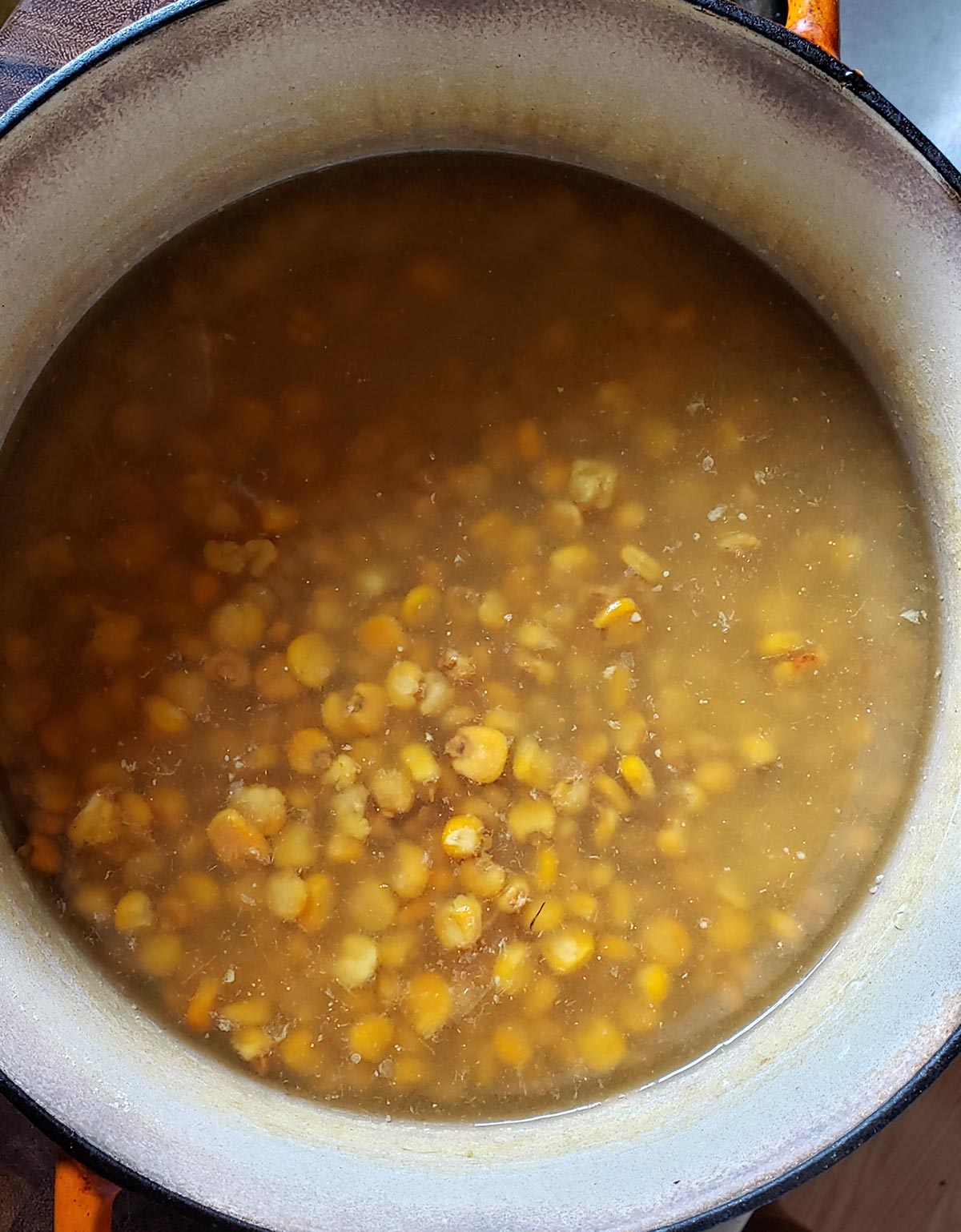
Nixtamal Happens Overnight
Waiting. You need the corn to soak for 8 to 12 hours at room temperature. If the corn has soaked up a lot of water after the boil, pour in enough so the corn is covered by about 1/2 inch. Cover and let the pot set overnight. It takes that long for the calcium hydroxide to fully do its work.
After you’ve let the corn soak, you will see your pretty corn swimming in a sea of sludge: That’s the pericarp, or outer coating, that has sloughed off. That’s good.
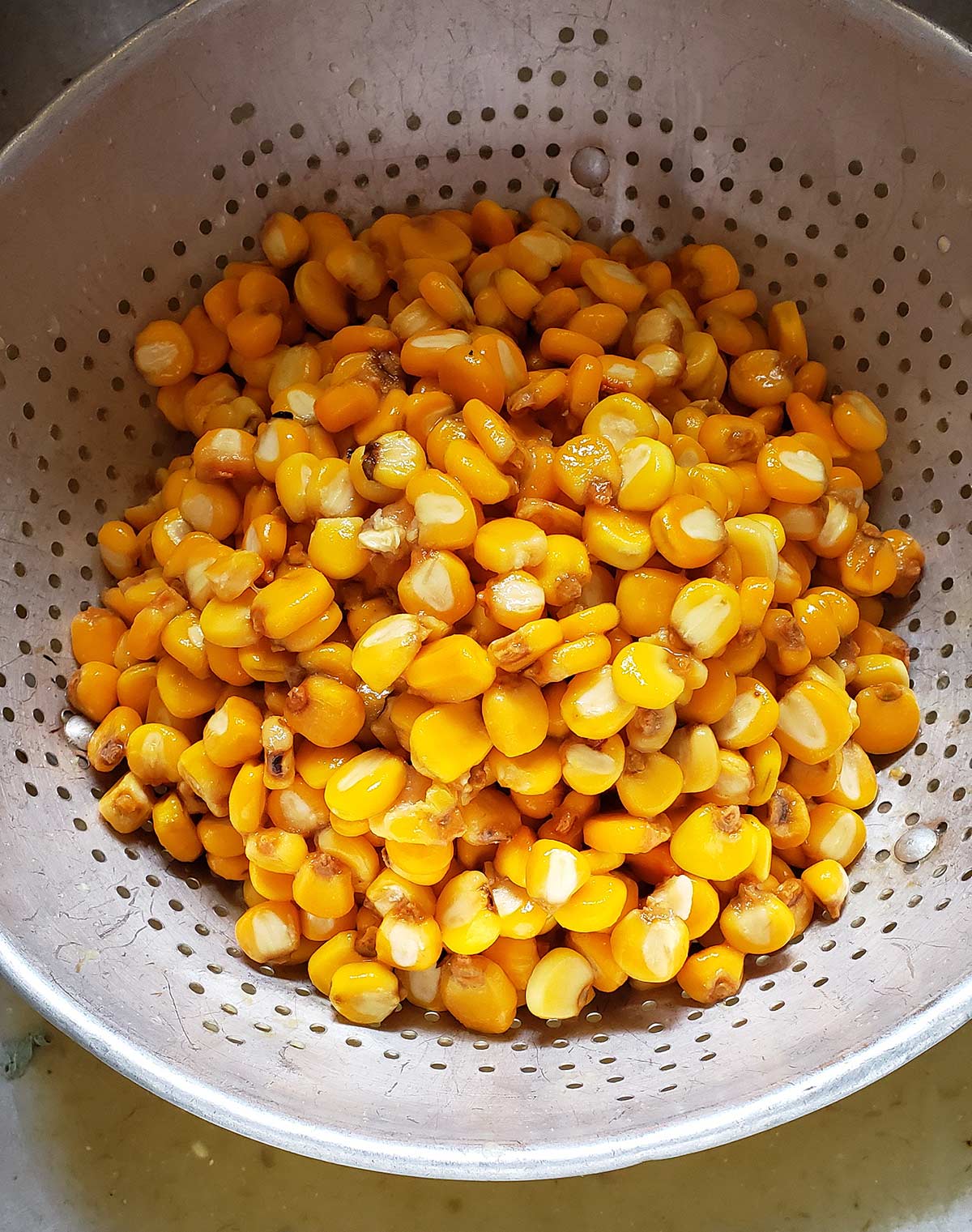
Rinsing and Rubbing
Rubbing and rinsing. You now need to rub off most or all of the remaining pericarp with your hands. Do this about 5 minutes or so, all in the sludgy water. Here’s a short video on how to do it.
Now, if you are making masa dough, save about a cup of that water, more if you are working with more than 2 pounds of dried corn. You’ll need this later.
Set the corn in a colander and rinse it well. Really well if you are using it whole-kernel for soup. You will notice that the sludge will collect in your sink’s screen. Periodically clean the screen. Leave a bit of the sludgy stuff on if you are making masa dough, get it all off of pozole or hominy grits. You now have nixtamal.
What to Do with Nixtamal
Now that you have nixtamal, normally you’d do one of two things: Grind it for tamales or tortillas, or keep it whole for pozole. I usually make a big batch, then grind it all in my corn grinder (yes, I am that crazy I have one), then make homemade masa harina with the rest for later.
Or, I will use the whole kernels in stews like the abovementioned pozole, of which I have many versions on this site. Pozole rojo, white pozole, pozole verde, and a Sonoran version called gallina pinta all use whole kernel nixtamal.
If you are not using it right away, you can dry nixtamal completely and use it as needed; it does take a long time to rehydrate and cook later, so keep that in mind if you use it in a stew down the road.
If you liked this recipe, please leave a ⭐️⭐️⭐️⭐️⭐️ rating and a comment below; I’d love to hear how everything went. If you’re on Instagram, share a picture and tag me at huntgathercook.
How to Make Nixtamal
Ingredients
- 1 kilo dried field corn, 2.2 pounds
- 10 grams calcium hydroxide, "cal" in Mexican markets
- 1 gallon water
Instructions
- Cover the corn with the water and stir in the cal. Bring to a rolling boil, stir, then drop to a bare simmer. Let the corn simmer, partially covered, for at least 30 minutes.
- Take a kernel out and bite it in half: You want to see it mostly cooked, but with a white, chalky center still. This can take as long as an hour, but start checking at 30 minutes. When the corn hits this stage, turn off the heat, stir once more, cover the pot and let it sit overnight.
- The next morning, use your fingers to sift the kernels in the now-sludgy water. You want to rub them well to remove the slimy pericarp. Pour the contents of the pot into a colander to drain. You will want to clean your sink's screen as the sludgy stuff will clog it.
- Rinse out the pot, then return the corn to it. Cover with fresh, cool water. Rub the kernels some more to get most of the pericarp off. (Here's a short video of the process.) Rinse in the colander one more time. You now have nixtamal.
Nutrition
Nutrition information is automatically calculated, so should only be used as an approximation.


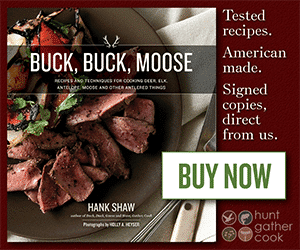



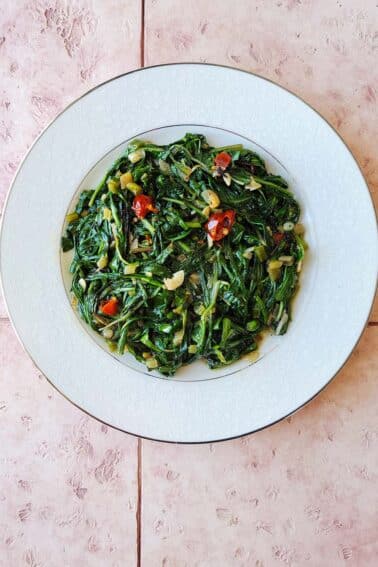
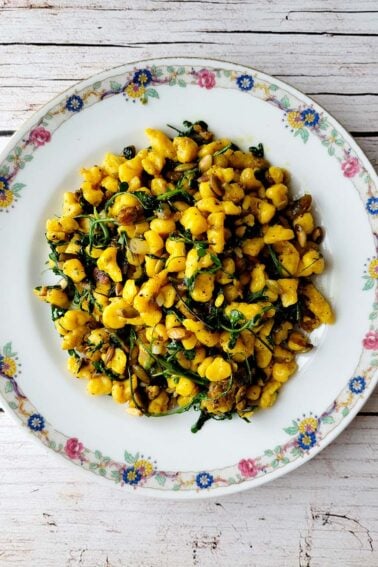
I bought several bags of white and golden Harmony from nuts.com. My intention is to can it. I knew nothing of the process that I have been reading in this article of nixing. Could you please give me direction on what I need to do to can the dried harmony that I have bought. Do I need to do this Processing in the article or can I soak it in water overnight and then process by canning? Any direction or insight to this would be greatly greatly appreciated. Thank you.
Lorri: If it is already hominy it has already been nixtamalized. So you can just rehydrate and pressure cann it.
I received dried field corn from my CSA. This recipe is easy to follow and works great. Canned hominy may be ruined for me now.
I plan to dehydrate the nixtamal whole kernels. When they are totally dry, how should I store them? When I want to make Pozole, what should I do with the kernals? Do they need to soak overnight? Or can they be added to the broth at the beginning of the final day of assembly of the Pozole?
David: I would store them in a ziploc bag. They will take a long time to cook, so soaking overnight is not a bad idea.